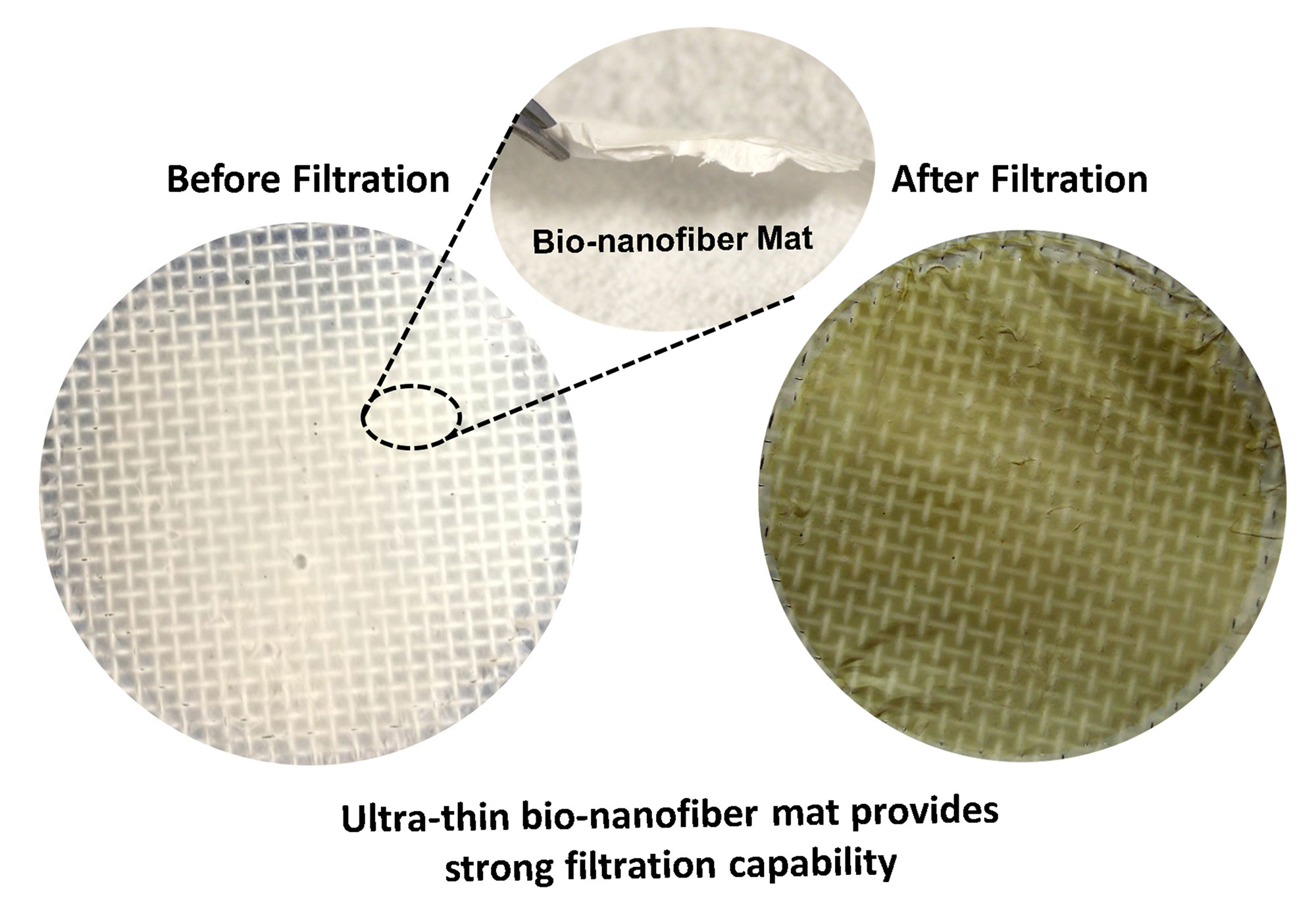Researchers from Washington State University, in cooperation with the University of Science and Technology Beijing, have developed a cheap and biodegradable air filter made from soy, and can trap toxic chemicals that most air filters can’t, like carbon monoxide and formaldehyde.
The team, led by Weihong (Katie) Zhong, professor in the School of Mechanical and Materials Engineering, and graduate student Hamid Souzandeh, says that this material could lead to better air purifiers, especially those that suffer from poor air quality (like in major cities in China).
Poor air quality results into a number of diseases such as asthma, heart disease and lung cancer. While commercial air purifiers are efficient in removing the small particles from soot, smoke, or car exhaust, they don’t take into account bigger and more hazardous molecules like carbon monoxide, formaldehyde, sulfur dioxide and other volatile organic compounds.

Source: Washington State University
These traditional air filters are usually made up of micron-sized fibers of synthetic plastics and physically capture small particles, but they can’t chemically trap these more hazardous bigger molecules. What’s worse is that “these filters are often made out of glass and petroleum products, so disposing them creates secondary waste,” says Zhong.
As a solution, the team from WSU and USTB have synthesized a new air filtering material made up of natural, purified soy protein and bacterial cellulose. These two ingredients are cost effective and are already used in several other products like tissues and wound dressings.

Source: Washington State University
Soy contains 18 amino groups and several other large chemical groups. Each of these groups have the potential to trap passing pollution on the molecular level. The researchers then used acrylic acid treatment to disentangle the very rigid soy protein, to expose the chemical groups to the pollutants more.
The results have shown that it was able to remove almost all the small particles and harmful, bigger pollutants.
“Especially in very polluted environments, people might be breathing an unknown mix of pollutants that could prove challenging to purify. But, with its large number of functional groups, the soy protein is able to attract a wide variety of polluting molecules. We can take advantage from those chemical groups to grab the toxics in the air,” says Zhong.
“The materials are also cost-effective and biodegradable. Soybeans are among the most abundant plants in the world,” she added.
Zhong occasionally visits her hometown in China and has personally experiences the heavy air pollution in Beijing that turn sunny skies into gray smog in just a few days. “Air pollution is a very serious health issue,” she said. “If we can improve indoor air quality, it would help a lot of people.”
Article Sources:












